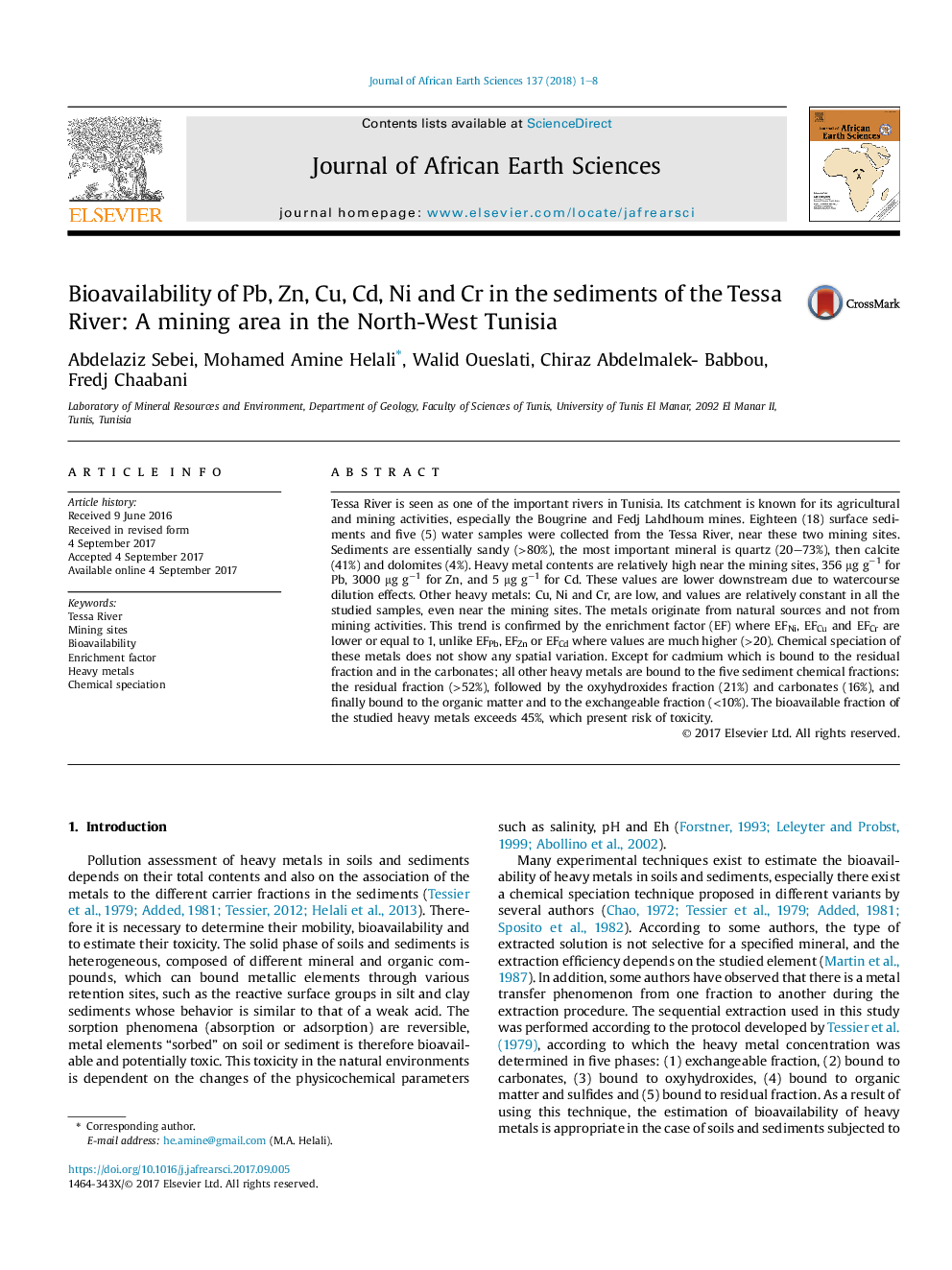| Article ID | Journal | Published Year | Pages | File Type |
|---|---|---|---|---|
| 8913675 | Journal of African Earth Sciences | 2018 | 8 Pages |
Abstract
Tessa River is seen as one of the important rivers in Tunisia. Its catchment is known for its agricultural and mining activities, especially the Bougrine and Fedj Lahdhoum mines. Eighteen (18) surface sediments and five (5) water samples were collected from the Tessa River, near these two mining sites. Sediments are essentially sandy (>80%), the most important mineral is quartz (20-73%), then calcite (41%) and dolomites (4%). Heavy metal contents are relatively high near the mining sites, 356 μg gâ1 for Pb, 3000 μg gâ1 for Zn, and 5 μg gâ1 for Cd. These values are lower downstream due to watercourse dilution effects. Other heavy metals: Cu, Ni and Cr, are low, and values are relatively constant in all the studied samples, even near the mining sites. The metals originate from natural sources and not from mining activities. This trend is confirmed by the enrichment factor (EF) where EFNi, EFCu and EFCr are lower or equal to 1, unlike EFPb, EFZn or EFCd where values are much higher (>20). Chemical speciation of these metals does not show any spatial variation. Except for cadmium which is bound to the residual fraction and in the carbonates; all other heavy metals are bound to the five sediment chemical fractions: the residual fraction (>52%), followed by the oxyhydroxides fraction (21%) and carbonates (16%), and finally bound to the organic matter and to the exchangeable fraction (<10%). The bioavailable fraction of the studied heavy metals exceeds 45%, which present risk of toxicity.
Related Topics
Physical Sciences and Engineering
Earth and Planetary Sciences
Geology
Authors
Abdelaziz Sebei, Mohamed Amine Helali, Walid Oueslati, Chiraz Abdelmalek- Babbou, Fredj Chaabani,
